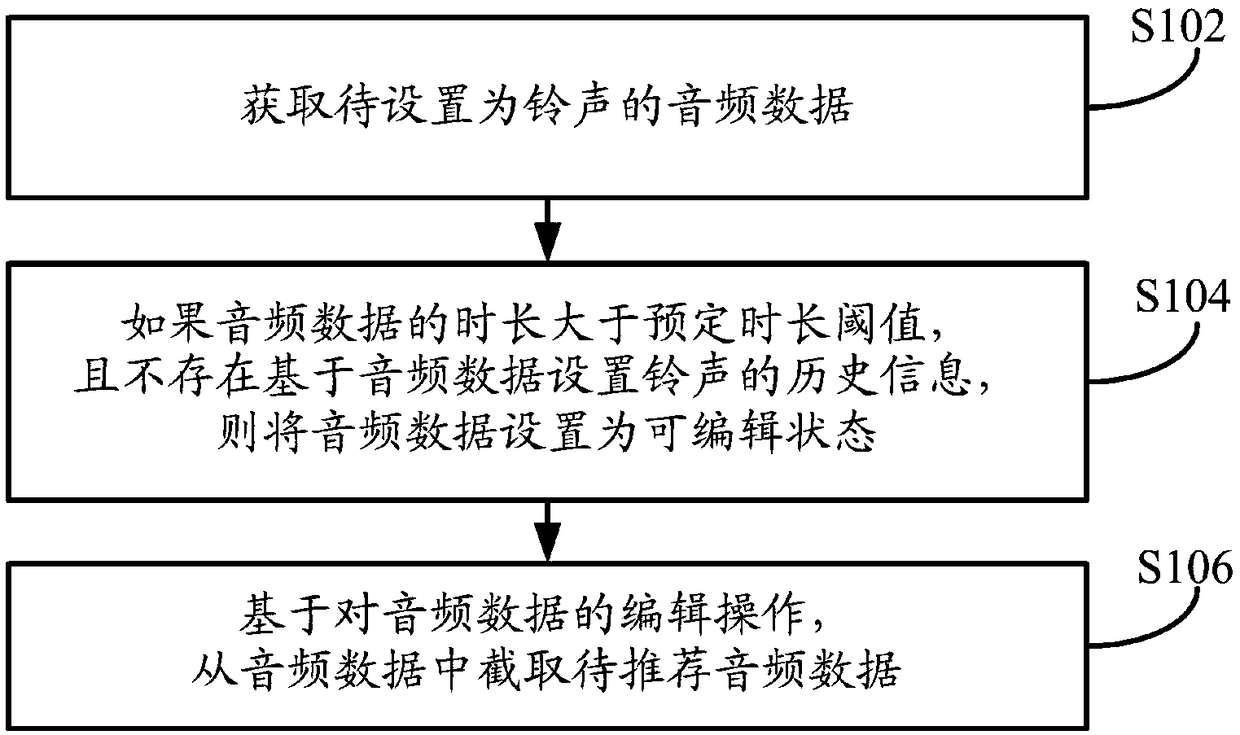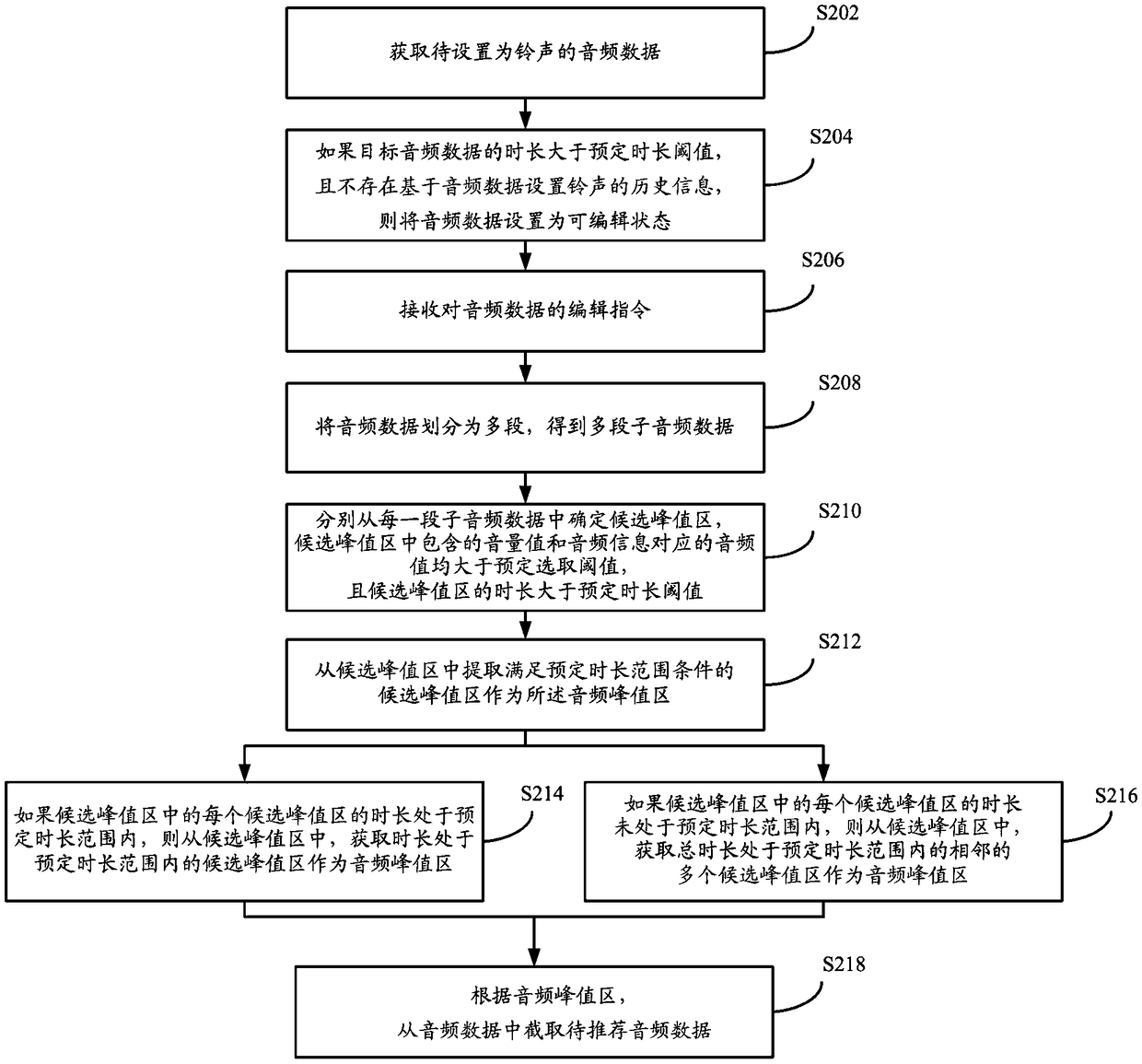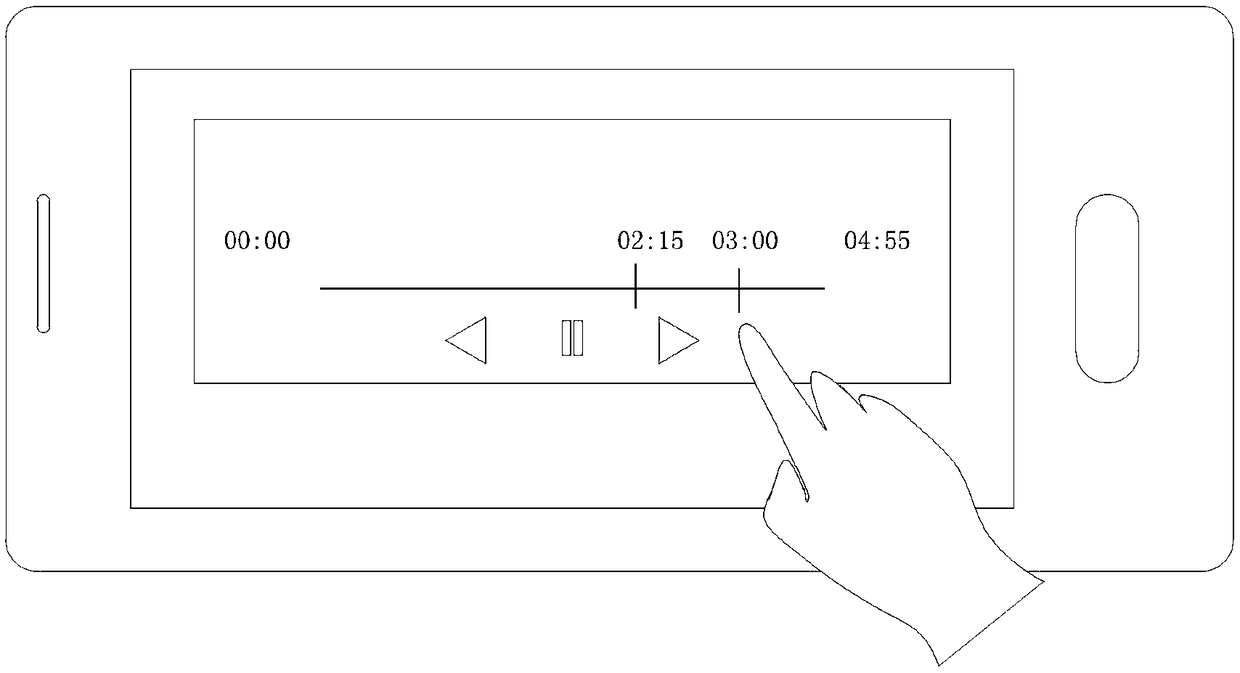Audio data processing method, device and mobile terminal
A technology of audio data and processing methods, applied in the computer field, can solve problems such as poor user experience and high time and cost consumption, and achieve the effect of improving processing efficiency and user experience
- Summary
- Abstract
- Description
- Claims
- Application Information
AI Technical Summary
Problems solved by technology
Method used
Image
Examples
Embodiment 1
[0058] Such as figure 1 As shown, the embodiment of the present application provides a method for processing audio data, and the execution body of the method may be a mobile terminal, wherein the mobile terminal may be a mobile phone, a tablet computer, etc., and the mobile terminal may be a mobile terminal used by a user. After the audio data is acquired, the method can automatically extract the audio peak area according to the volume information and audio information of the audio data, and recommend it to the user. The method specifically may include the following steps:
[0059] In step S102, audio data to be set as a ringtone is acquired.
[0060] Wherein, the audio data to be intercepted and set as a ringtone can be any audio data, such as audio data stored by the user in the mobile terminal, or audio data obtained online by the user, or it can be stored or stored by the user in the mobile terminal. Audio data, etc. in video data acquired online.
[0061] In practice, ...
Embodiment 2
[0075] Such as figure 2 As shown, the embodiment of the present application provides a method for processing audio data, and the execution body of the method may be a mobile terminal, wherein the mobile terminal may be a mobile phone, a tablet computer, etc., and the mobile terminal may be a mobile terminal used by a user. After the audio data is acquired, the method can automatically extract the audio peak area according to the volume information and audio information of the audio data, and recommend it to the user. The method specifically may include the following steps:
[0076] In step S202, audio data to be set as a ringtone is acquired.
[0077] For the specific processing procedure of the above S202, reference may be made to the relevant content of S102 in the above Embodiment 1, which will not be repeated here.
[0078] In step S204, if the duration of the audio data is greater than a predetermined duration threshold and there is no history information of setting a ...
Embodiment 3
[0103] Such as Figure 4 As shown, the embodiment of the present application provides a method for processing audio data, and the execution body of the method may be a mobile terminal, wherein the mobile terminal may be a mobile phone, a tablet computer, etc., and the mobile terminal may be a mobile terminal used by a user. After the audio data is acquired, the method can automatically extract the audio peak area according to the volume information and audio information of the audio data, and recommend it to the user. The method specifically may include the following steps:
[0104] In step S402, audio data to be set as a ringtone is acquired.
[0105] For the specific processing procedure of the above S402, reference may be made to the related content of S102 in the above Embodiment 1, which will not be repeated here.
[0106] In step S404, if the duration of the audio data is greater than a predetermined duration threshold and there is no history information of setting a r...
PUM
 Login to View More
Login to View More Abstract
Description
Claims
Application Information
 Login to View More
Login to View More - Generate Ideas
- Intellectual Property
- Life Sciences
- Materials
- Tech Scout
- Unparalleled Data Quality
- Higher Quality Content
- 60% Fewer Hallucinations
Browse by: Latest US Patents, China's latest patents, Technical Efficacy Thesaurus, Application Domain, Technology Topic, Popular Technical Reports.
© 2025 PatSnap. All rights reserved.Legal|Privacy policy|Modern Slavery Act Transparency Statement|Sitemap|About US| Contact US: help@patsnap.com



